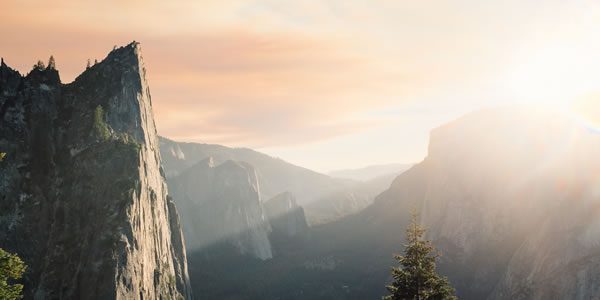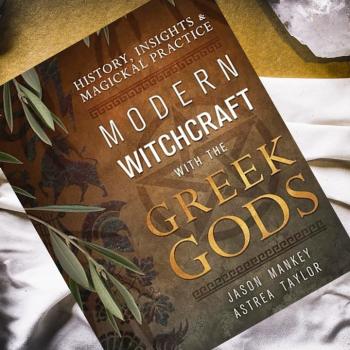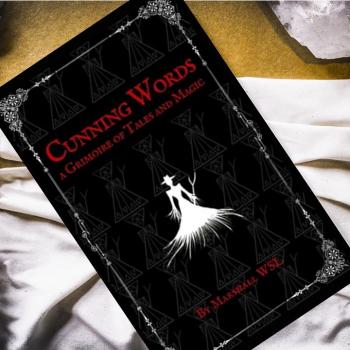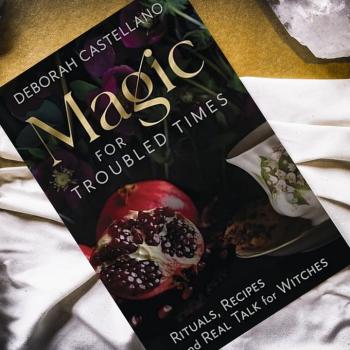Although no view of eschatology can negate the theocentric outlook of the Bible as evidenced by man’s place in creation, God’s ownership of and care for creation, the problem remains how the latter can be reconciled with an eschatological view of apocalyptic destruction. The title of this paper “Why Care If It’s All Going To Burn Anyways?” is characteristic of the apathy many evangelicals have towards environmental issues.

First of all it is necessary to establish that not all eschatological systems hold to an apocalyptic destruction in the eschaton. Post-millennialism, for example, believes that by God’s work through the church the world will become a better place and the golden age of the millennium will take place on this earth. As Calvin DeWitt has argued in Nature Reborn, all forms of social action by the church are strongly encouraged by this eschatology, environmentalism notwithstanding (6). Although advocated throughout most of church history, in 20th and 21st century post-millennialism is not widely adhered to; pre-millennialism has taken its place as the most popular system of eschatology among American Evangelicals.
Premillennial eschatology is frequently characterized by a very pessimistic view of the future, including an apocalyptic annihilation of the earth. This view was recently made popular and has come to be understood by many as the Christian view of eschatology through the tremendously successful Left Behind novels by Jerry Jenkins and Tim LaHaye. Dispensationalism, the eschatological system underlying the series, views the hope of Christians as a secret rapture, in which the faithful are taken out of this world. The world then becomes worse and worse, anti-Christ arises, God brings destruction upon the earth until finally Christ returns to earth, destroys his enemies, gathers those who became Christians since the rapture and creates a brand new earth on which he establishes the millennial kingdom.
Tom Sine writes in Sojourners Magazine that “LaHaye’s writings tend to foster both an eschatology of disengagement and the politics of fear” (www.sojo.net). It takes little imagination to see why Al Truesdale sees the escapist view advocated by the Left Behind series as “an eschatology that makes it religiously unnecessary and logically impossible to engage in the long-range commitments to the environment required by a truly serious attitude of ecological stewardship” (116). The believer’s hope is not realized within this world but through an escape from the earth.
Calvin DeWitt shows that escapist eschatology is not a recent phenomenon: “Under the continuing influence of the Gnosticism that infected the early church, some have reduced God to the one who saves us out of creation” (Caring 40). He laments that “it is in fact a temptation to consider giving up on creation altogether, and many have done so” (Caring 37). It is this attitude of “why care, if it’s all going to burn anyway” that has led many believers to justify neglect of the environment. After all, Christians have been given the great commission to preach the gospel to all nations, hence “too much attention to environmental stewardship…trivializes our calling”, as Revered Scott Gilchrist of Southwest Bible Church in Beaverton, Oregon puts it (Cole).
Although escapist eschatology is widespread in the theology of premillennialism, not all who take a premillennial view of eschatology have such a pessimistic outlook. Whereas classical dispensationalism, the eschatological system of Left Behind, placed the kingdom of God entirely in the future after an apocalyptic destruction of the earth, a more progressive form of dispensationalism came to replace the classical view, largely due to the writings of George Eldon Ladd. While holding to premillennialism, Ladd rejected the idea that the kingdom was a future reality only. Instead he argued for the “now and not yet”, “here and not here” of the kingdom. Although it would only be fully realized in the future millennial reign of Christ, the kingdom had been inaugurated by the first coming of Christ. The church was to live by kingdom ethics now and so draw the future reality of the kingdom into the present.
Van Leeuwen shows how this view impacts the Christian’s attitude towards the environment: “The final renewal of all things has begun already in this age, in Christ and those who are his new creation. But this new creation is by no means merely a human phenomenon that leaves creation as a whole behind. God’s re-creation of the world is not yet complete, but in Christ and his body, the church, it has begun” (68, emphasis his). The church now is striving to reflect the values that will be fully expressed in the future kingdom. As stated earlier, the root of the environmental crisis lies in human sinfulness. Through his redemptive work, Christ has begun to repair the effects of sin. Renewal has begun in the church, believers whose sins are forgiven have been empowered by God to bring restoration where sin has caused destruction. The church’s mandate for healing and redemption is far from being limited to the believers’ relationship with God and with one another. Even as now all creation waits for the church’s ultimate eschatological redemption (Rom 8), so now the church must express the inaugurated process of redemption to this world in anticipation of the future. Van Leeuwen summarizes:
“Insofar as sin has caused a brokenness in humanity’s relationships with nature, and insofar as the restoration of all nonhuman creation is included in the coming kingdom, it necessarily follows that righteousness includes a restored relationship with creation. Kingdom righteousness necessarily implies eco-justice. The ethic of peacemaking, shalom-building, and nonviolence must be extended to embrace the relationship with creation” (88).
This paradigm of the “now and not-yet” of the kingdom of God demands of the church to bring redemption to the earth now, regardless of what will happen to creation at Christ’s return. The principle of caring for things that do not last forever and are destined for decay is seen in the human body (Lucas 96). Since the fall the human body has been flawed and will progressively deteriorate throughout the lifetime of a human until death and on to decay. Yet despite the temporal nature of the human body, and despite the process of decay that begins even while the person is still alive, we care for our bodies, restore and nurture them. Contrary to stoic thought the Christian does not treat his/her body as merely an evil host in which the soul is doomed to reside until its deliverance from matter. In the biblical worldview the body is part of a creation God called good, and although fallen and temporal, it needs to be cared for as a part of God’s good creation.
Likewise, even if we hold to a view in which the earth will ultimately be destroyed, this does not negate our responsibility to care for the earth. God has called creation good and has appointed us as stewards over the earth, not as strangers in an evil environment from which he will rescue us. The temporality of the earth does not imply a devaluing of its innate qualities as God’s creation. It needs to be pointed out that the eschatological destruction envisioned by many premillennialists is due to God’s acts of judgment upon the earth because of man’s sinfulness. Like in Noah’s flood, the earth will once again suffer destruction because of God’s judging mankind. This kind of destruction is entirely different from our present ecological crisis. Whereas the eschatological destruction is a sovereign act of God’s justice, the earth’s present demise is due to human neglect and sin. Simply because God will bring destruction in his righteousness does not give us the right to destroy the earth now by our unrighteous neglect and exploitation. Just as we now care for human beings who will ultimately be destroyed in God’s judgment, we must care for the earth.

















